Top Crowded Attractions in Kyoto and How to Avoid the Masses
Kyoto is one of the most famous travel destinations, not just in Japan, but worldwide. It’s no surprise that some of its most popular attractions can get very busy, especially during peak travel seasons like cherry blossom and fall foliage.
Having visited twice and with another trip planned next month, I’d say don’t let online reviews about the crowds in Kyoto discourage you. A lot of the places are popular for a reason, and the city itself is absolutely worth visiting. With a bit of planning, there are ways to avoid the busiest times, manage your expectations, and still fully enjoy your visit. Below are some of the most crowded places in Kyoto, along with tips from our experiences on how to navigate them smoothly.
Kiyomizu-dera
Kiyomizu-dera, a UNESCO World Heritage site, was the very first place we visited in Kyoto. It holds a special memory as it’s where we purchased our first goshuincho (a temple/shrine stamp book) and collected our first goshuin. This temple is famous for its impressive wooden structure, seemingly floating over the hillside, and offering views of the city below. It is a popular destination year-round, but especially in the fall when the surrounding landscape glows with autumn foliage.
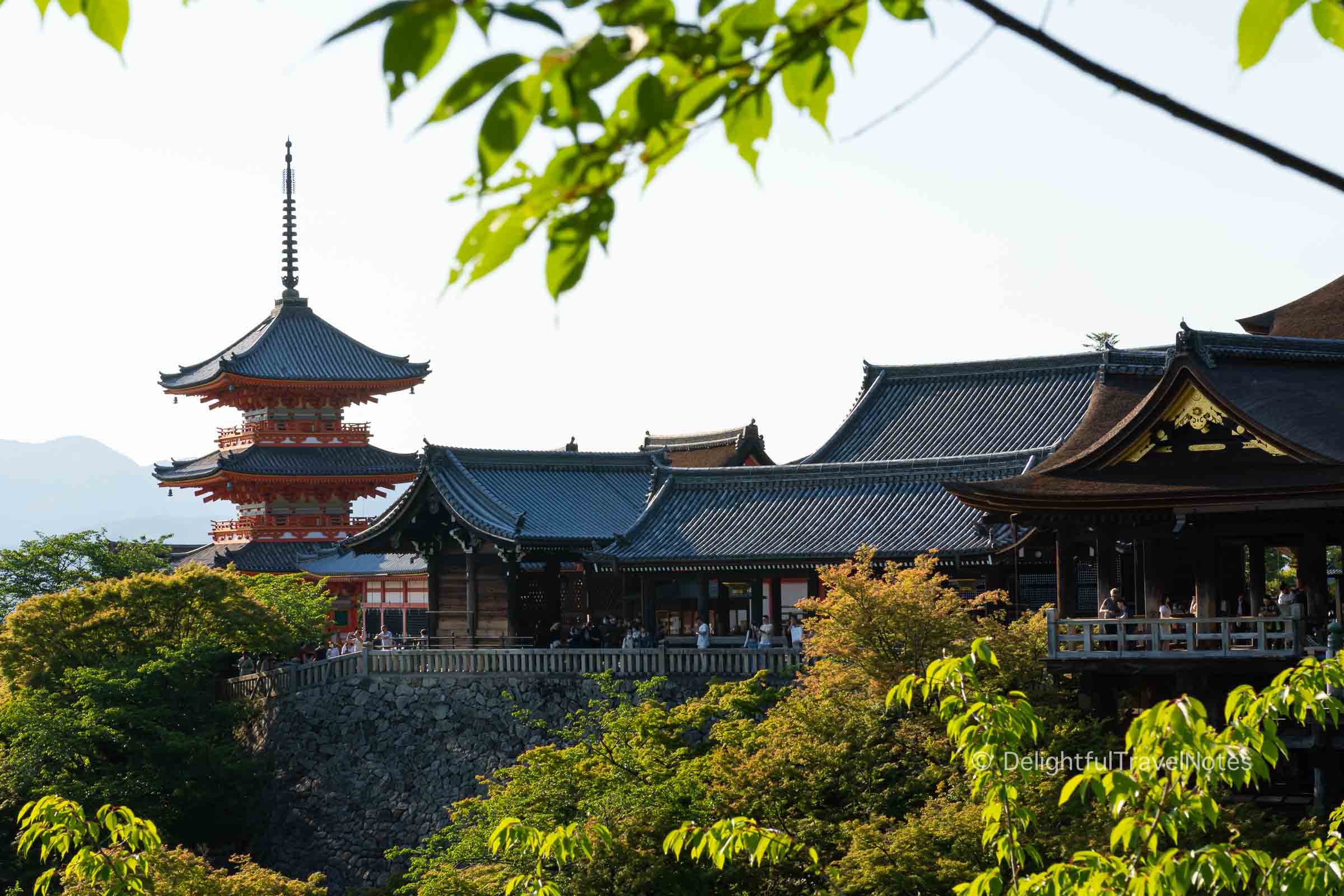
Getting there in the morning as early as possible can help you beat the crowds. Our visit was in late afternoon (around 4 pm) and it was still fairly crowded. The good news is the majority of the crowds tends to gather in certain areas like the entrance, the main hall and the narrow streets leading to the temple (Sannenzaka and Ninenzaka). As you walk further into the temple grounds, crowds will thin out/spread out quickly.
For those who appreciate grand wooden structures of Japanese temples, I highly recommend visiting Higashi Hongan-ji Temple. This temple is within walking distance from Kyoto Station and features impressive wooden buildings and intricate woodwork. It is much less crowded than Kiyomizu-dera. The only thing it lacks compared to Kiyomizu-dera in my opinion is the natural setting – there are no mountain backdrops or abundant greenery, but its architectural grandeur makes up for it in a different way.
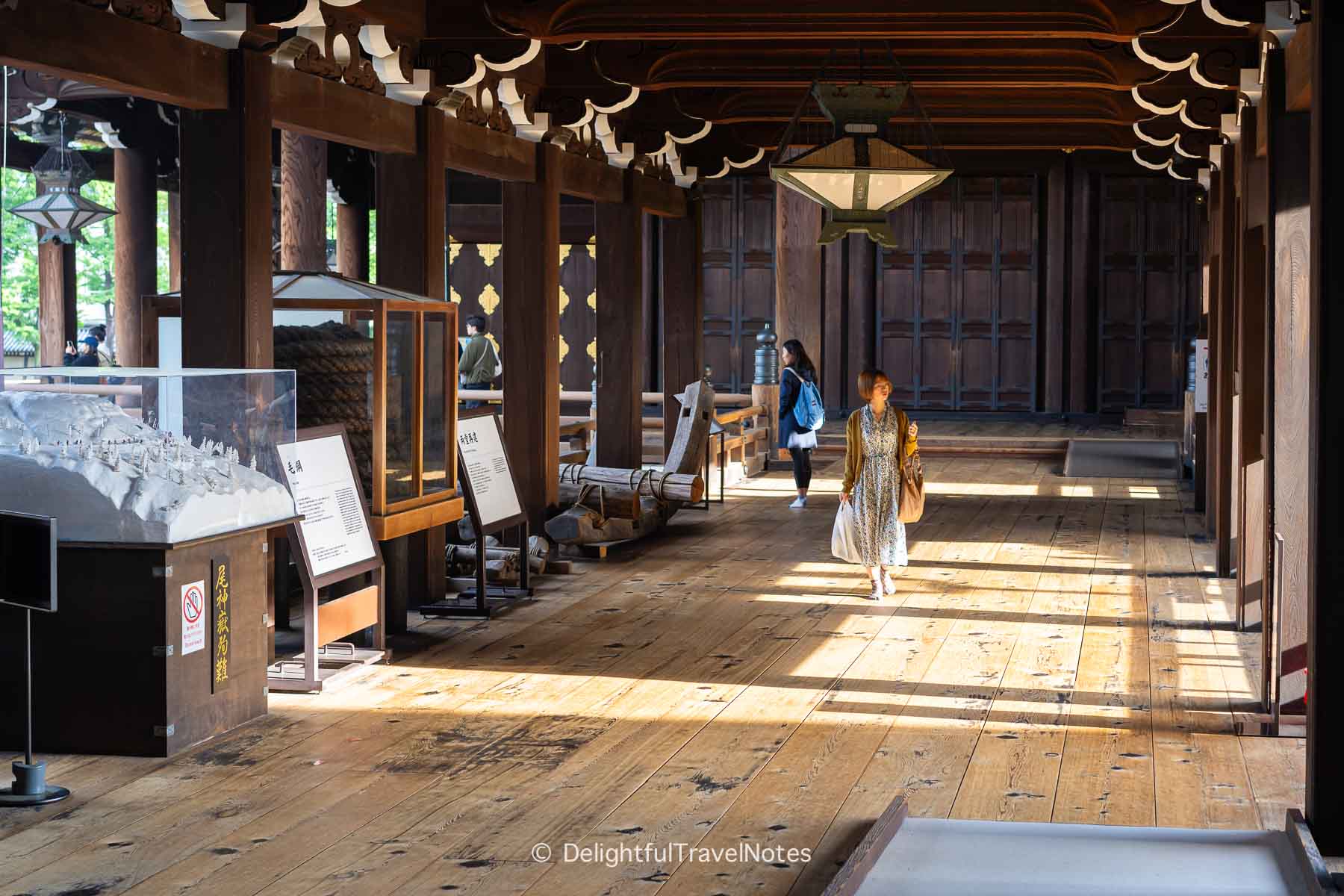
If you don’t mind traveling a bit further, about 45-50 minutes from Kyoto, I recommend visiting Ishiyamadera Temple in Otsu, Shiga Prefecture. This temple has quite a few similarities to Kiyomizu-dera, like being built on a cliff and supported with wooden pillars.
Kinkaku-ji
One of Kyoto’s most famous landmarks, Kinkaku-ji (the Golden Pavilion) attracts a lot of tourists, tour groups and school trip kids. Its pathways and viewing areas can be packed during the day. It is a small area, so the crowds can feel overwhelming at times, especially around the main pond where people take photos of the pavilion’s reflection.
Some people say Kinkaku-ji isn’t worth the hassle due to its relatively small grounds, remote location and the limited things to see beyond the pavilion itself. However, I think the pavilion is very pretty and impressive in person, far more striking than any photo can convey. It’s not every day you come across a brilliant golden structure that stands out so vividly.
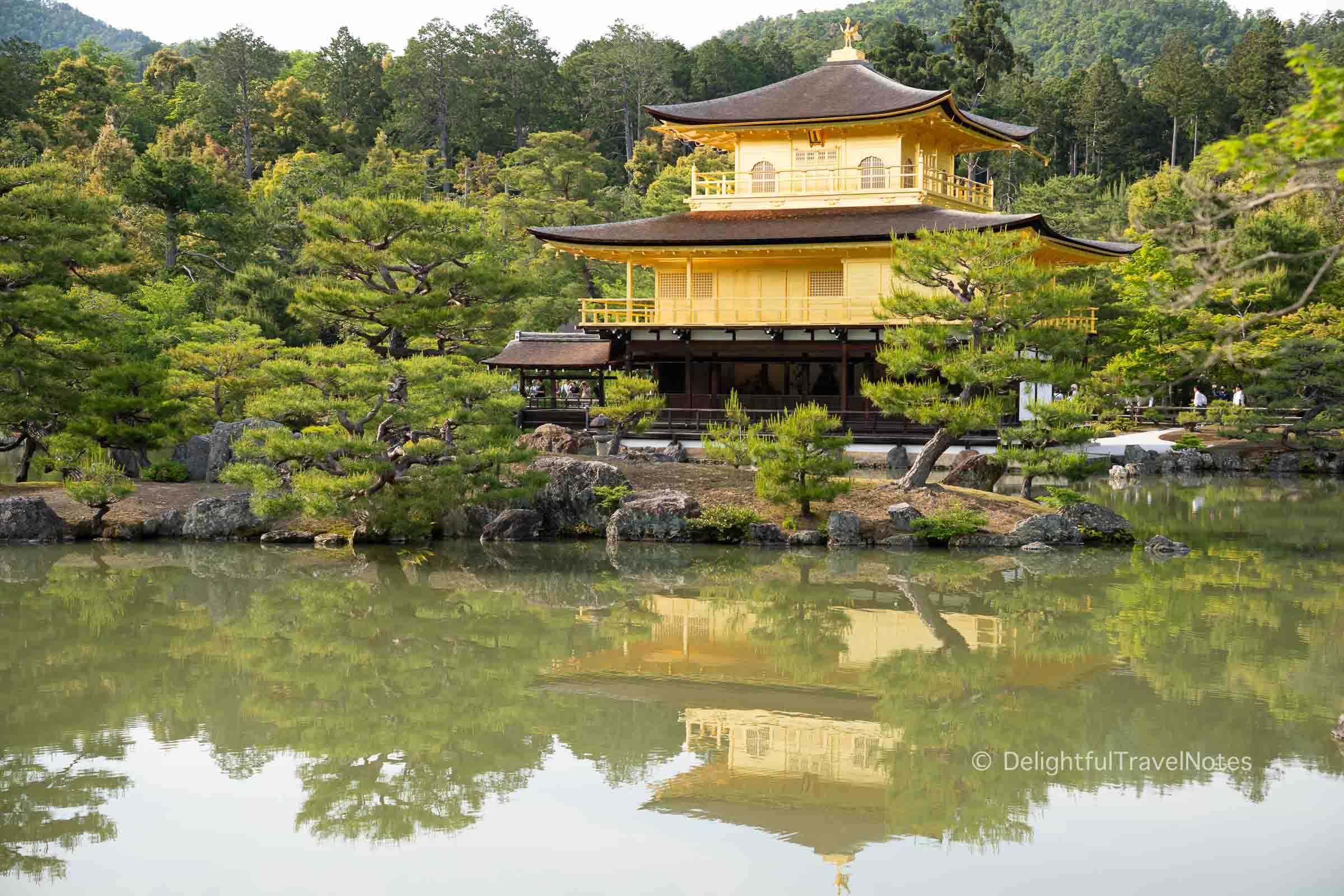
Your best bet to minimize the crowds is probably being there right at the opening times. We visited near closing times and the site was still fairly busy. As it is a little out of the way, getting to Kinkaku-ji via public transportation isn’t very convenient. The local buses can often be overcrowded, adding to the overall experience of crowdedness. If your budget allows, I highly recommend taking a taxi.
Fushimi Inari
Famous for its thousands of red torii gates, Fushimi Inari is one of Kyoto’s most iconic spots. Along with Kiyomizu-dera and Kinkaku-ji, it forms what we like to call the “Big 3” of Kyoto – the top three most popular and, unsurprisingly, most crowded sites in the city.
One of the great things about Fushimi Inari is that it is open 24/7, so if you want to avoid the crowds, you should visit either early in the morning or later in the evening. We went there at 7 am and though there was a decent number of people, it was not crowded. The higher we climbed, the fewer people we saw. When we came back down, the shrine ground was full of visitors and school kids.
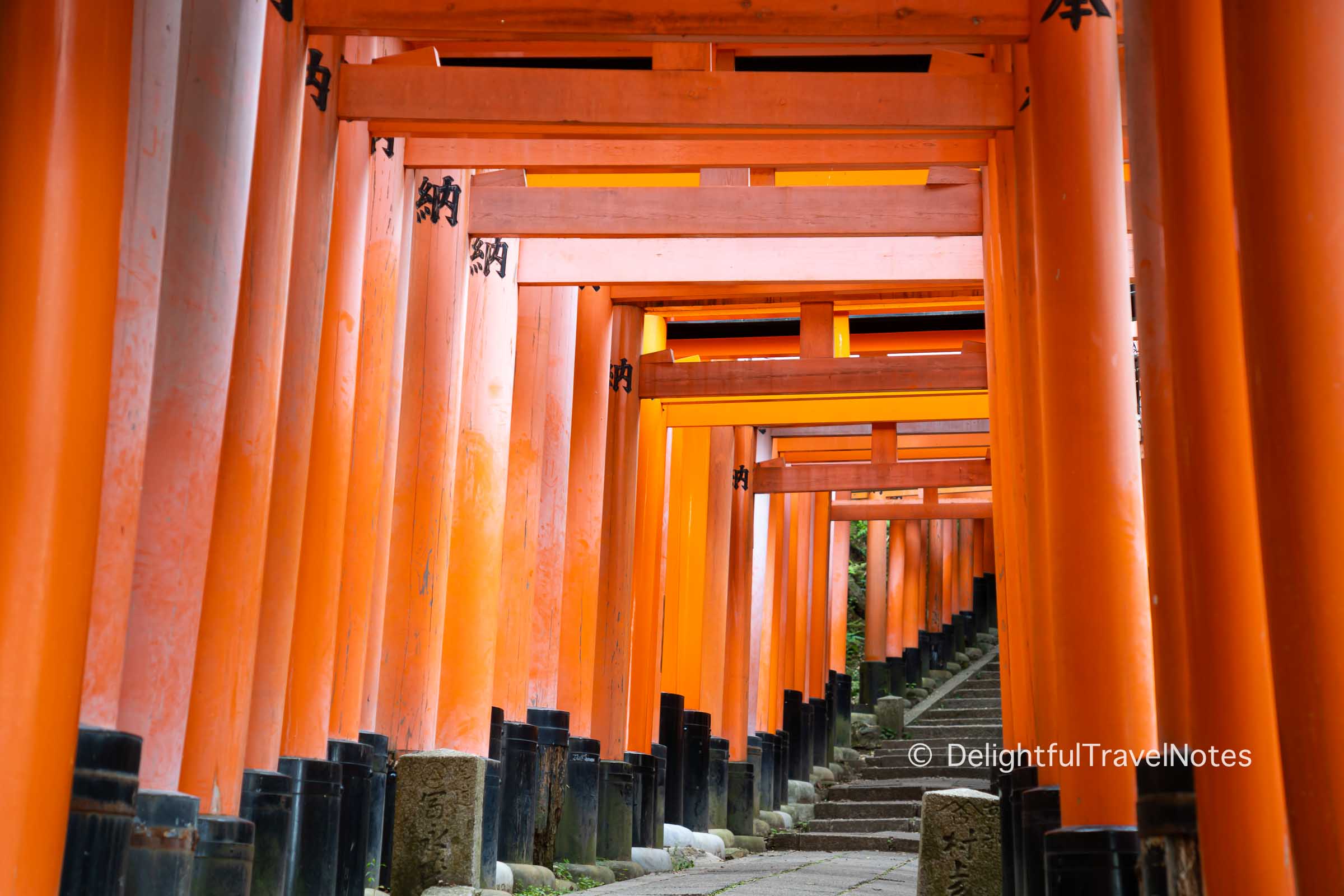
For me, while I would like to revisit Kinkaku-ji and Kiyomizu-dera in different seasons, I don’t feel the same desire with Fushimi Inari. The tunnel of torii gates stretching up the mountain is visually impressive, but personally, I felt that it lacked a certain atmosphere. It didn’t evoke much emotion or thought for me beyond its visual appeal.
Arashiyama Bamboo Forest
Arashiyama bamboo grove is another spot frequently packed with visitors in Kyoto. The path is also fairly short and you can quickly walk through it in about 10 minutes. If you are expecting a long, immersive experience, you may find it rather underwhelming. I compiled a list of serene bamboo groves and alternatives to Arashiyama bamboo here.
Honestly, you won’t miss much if you decide to skip Arashiyama bamboo grove. However, I wouldn’t recommend skipping the Arashiyama area as a whole if your schedule allows. The area is incredibly picturesque and there are a lot more to see than just the bamboo path. Check out my self-guided Arashiyama walking route, which will take you through beautiful and less crowded corners of Arashiyama.
Tenryu-ji

Tenryu-ji is another UNESCO site in Kyoto and this temple is located in Arashiyama area. The temple is famous for its garden with a beautiful borrowed scenery of Arashiyama mountains. However, the site can get very crowded and I remember trying to finish our visit as quickly as possible due to the crowds.
If Tenryu-ji is a place you are particularly interested in, I highly recommend visiting early in the morning to get the most out of the experience before the crowds arrive. However, if you are simply in the area and considering a quick stop, there is no need to meticulously time your visit. You may also consider skipping it and visit the rock garden at Konchi-in instead. It is a quiet temple with a lot to see and you can find out more in my Konchi-in guide.
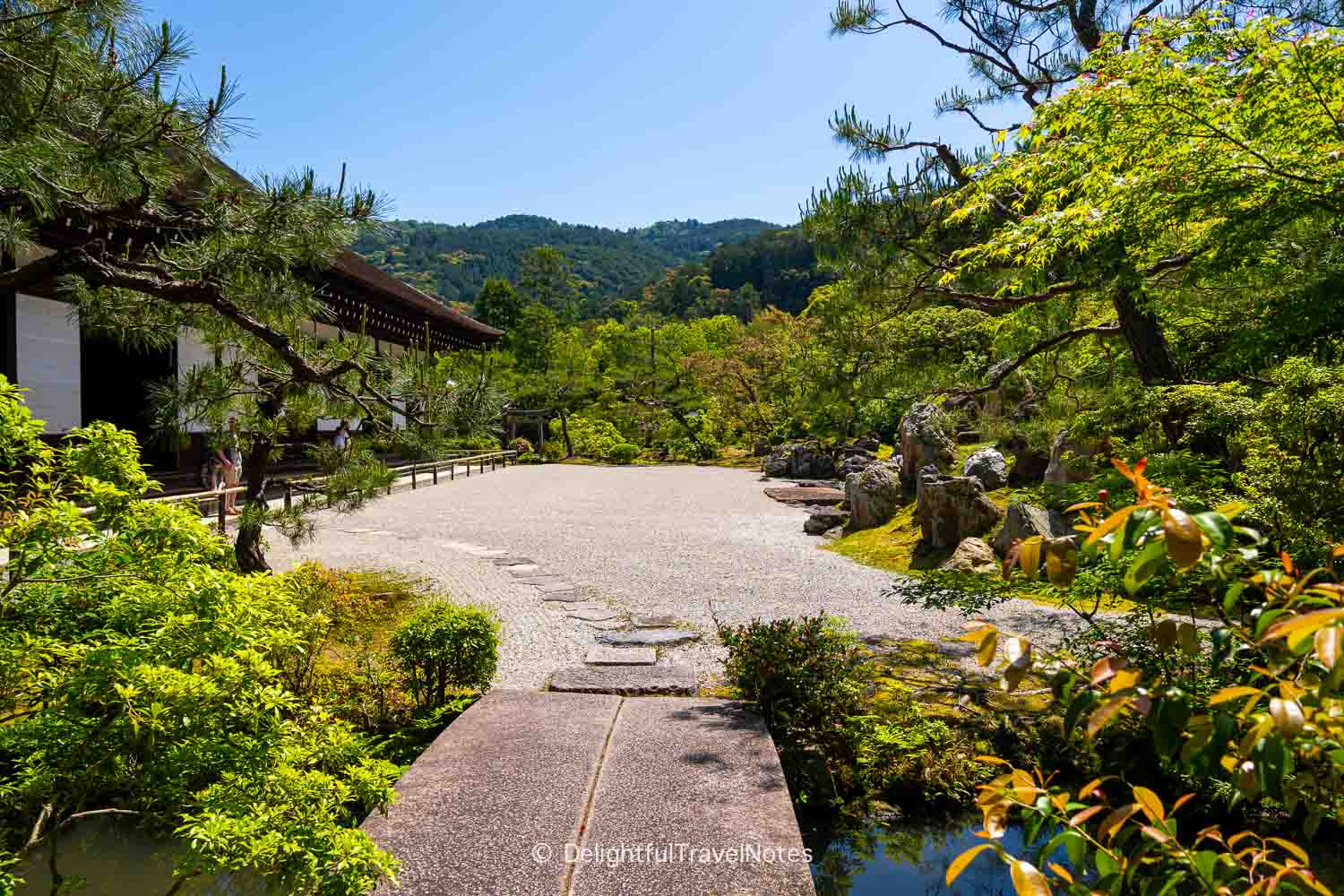
Sanjusangendo
We did not expect Sanjusangendo to be crowded, but on our most recent trip, we stopped by before lunch and were caught by surprise. The temple had quite a number of tourists and kids on school trips. Despite the crowds, I think this temple is among the must-see in Kyoto. The sheer number of Kannon statues inside the main hall, all lined up in rows, will blow you away. Their size and the scale of the hall are a sight you won’t forget – it is not something you see every day.
One downside is that no photography is allowed inside, which may be disappointing for those hoping to capture the moment. But I think the memory of standing in that hall in front of 1,001 Kannon statues will stay with you long after your visit.
Nijo Castle
If you are looking for a break from temple and shrine hopping in Kyoto, Nijo Castle is a great option. The castle grounds are expansive, with a series of beautifully landscaped gardens and open spaces that allow visitors to spread out. This makes it feel less crowded compared to some of the more compact historical sites in the city. However, it can get busy inside Ninomaru Palace, the centerpiece of Nijo Castle.
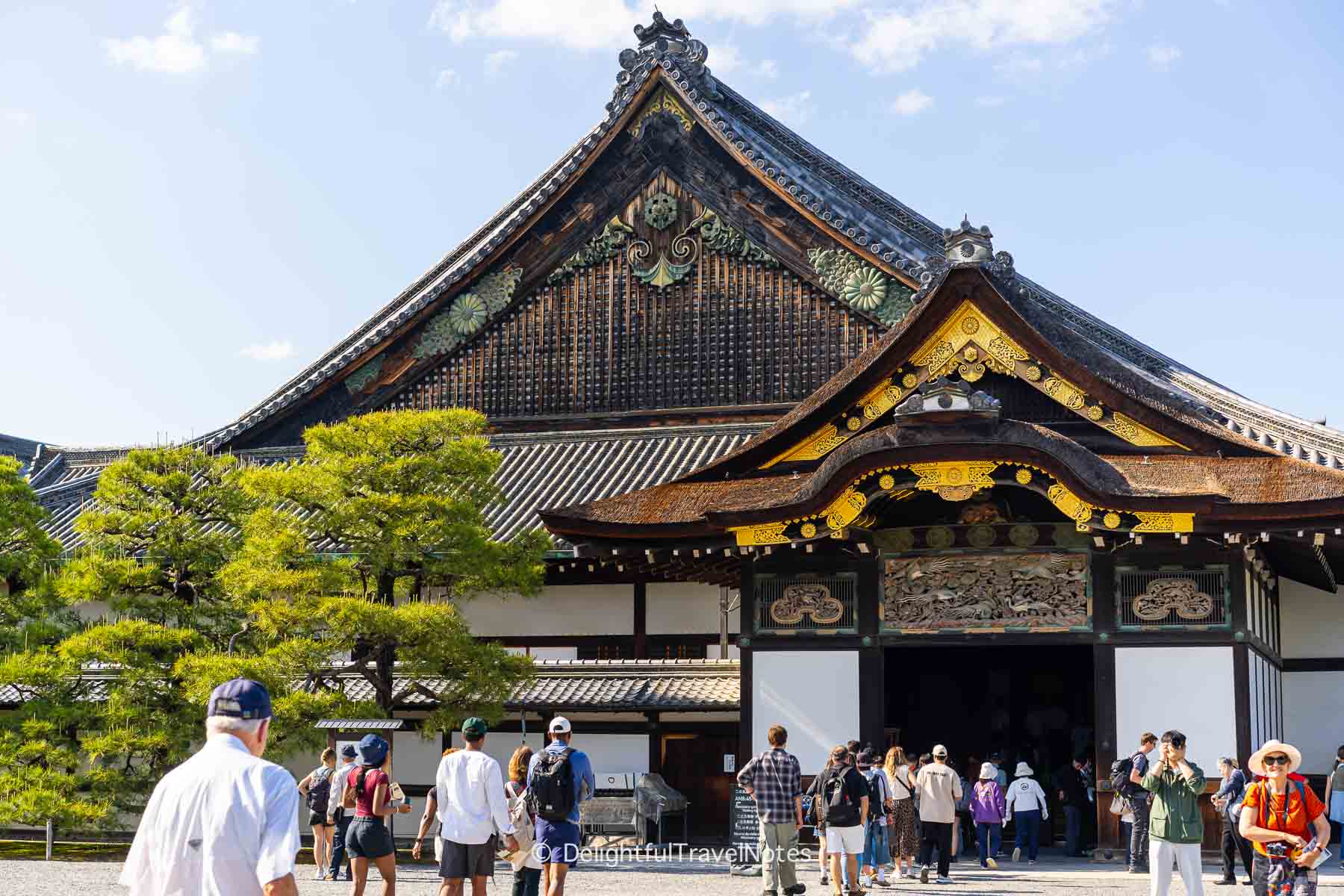
One important detail to keep in mind when planning your visit is the opening hours of the castle. Nijo Castle officially closes at 5 pm, but they stop admitting people at 4 pm. If you want to go inside Ninomaru Palace, make sure to arrive before 4:10 pm, as that’s the last time they allow entry into the palace. Given the size of the grounds and the palace, I recommend allocating at least two hours to fully explore everything without feeling too rushed.
Gion District
Gion is often described as one the most crowded places in Kyoto, but in our experience, the crowds tend to cluster in certain areas like Hanamikoji-dori, Sannenzaka, and Ninenzaka. If you take the time to wander beyond the typical tourist routes, you will discover quiet corners where you may hardly see anyone, even during the day.
To fully enjoy this historic district, I think it helps to stay in Gion so you can explore it at different times of the day. We had a great stay at The Celestine Hotel Gion which is right next to Kennin-ji Temple. If your budget allows, consider taking a private Gion walking tour which may add a layer of context that enhances your appreciation for the area and the culture.
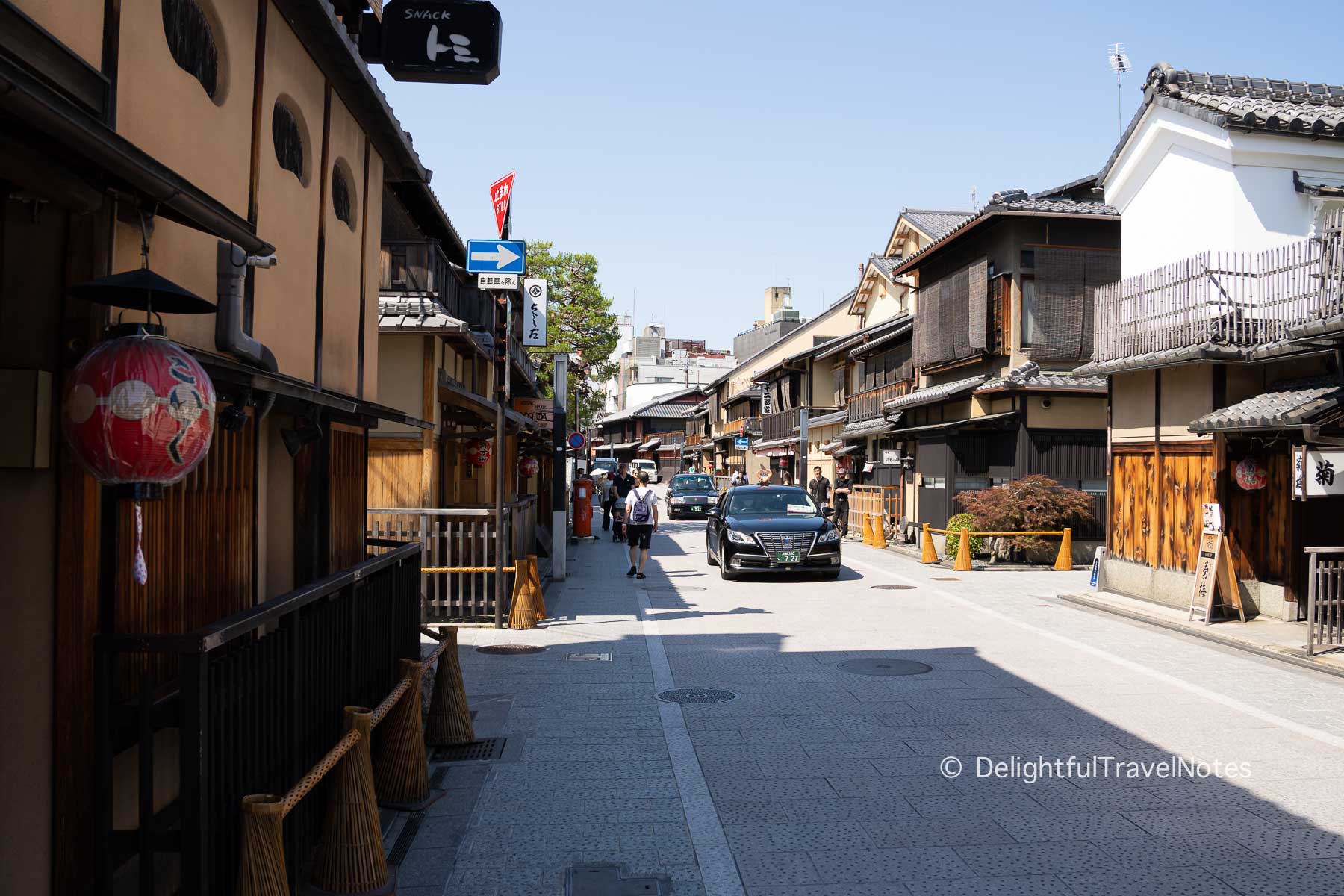
Final Thoughts
In summary, these are the most crowded sites we’ve encountered on our trips to Kyoto so far. While a couple of them can be skipped in my opinion, the rest are still worth visiting at least once. Don’t let the talk of overcrowding discourage you as there are ways to minimize the crowds. You should also add off-the-beaten-path places to your itinerary to balance your overall experiences.
During our most recent visits, Nanzen-ji was also fairly busy but not to an uncomfortable level. We have never been to Nishiki Market because it doesn’t really appeal to us, but I’ve heard it attracts large crowds. Additionally, the guide from our Kyoto Zen Garden Walking Tour mentioned that Ryoan-ji has become too crowded to truly enjoy these days, which is something to consider if you are planning a visit there.
I also shared how to plan an amazing trip to Kyoto with more tips to keep in mind. Kyoto has so much to see, and with a bit of planning, you can certainly enjoy its beauty without feeling overwhelmed by the crowds.
If you found this article helpful, please consider sharing it on Pinterest! Thank you so much!
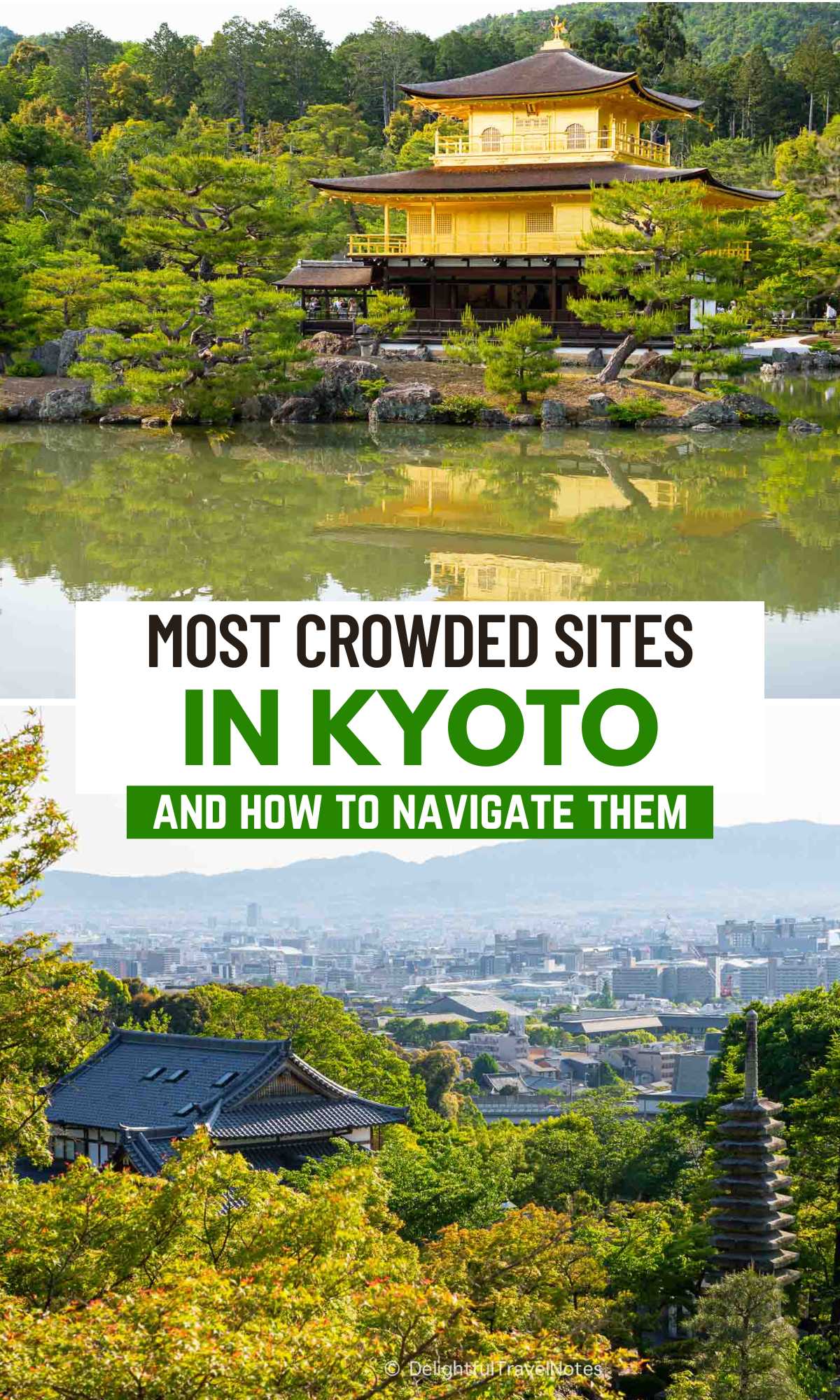
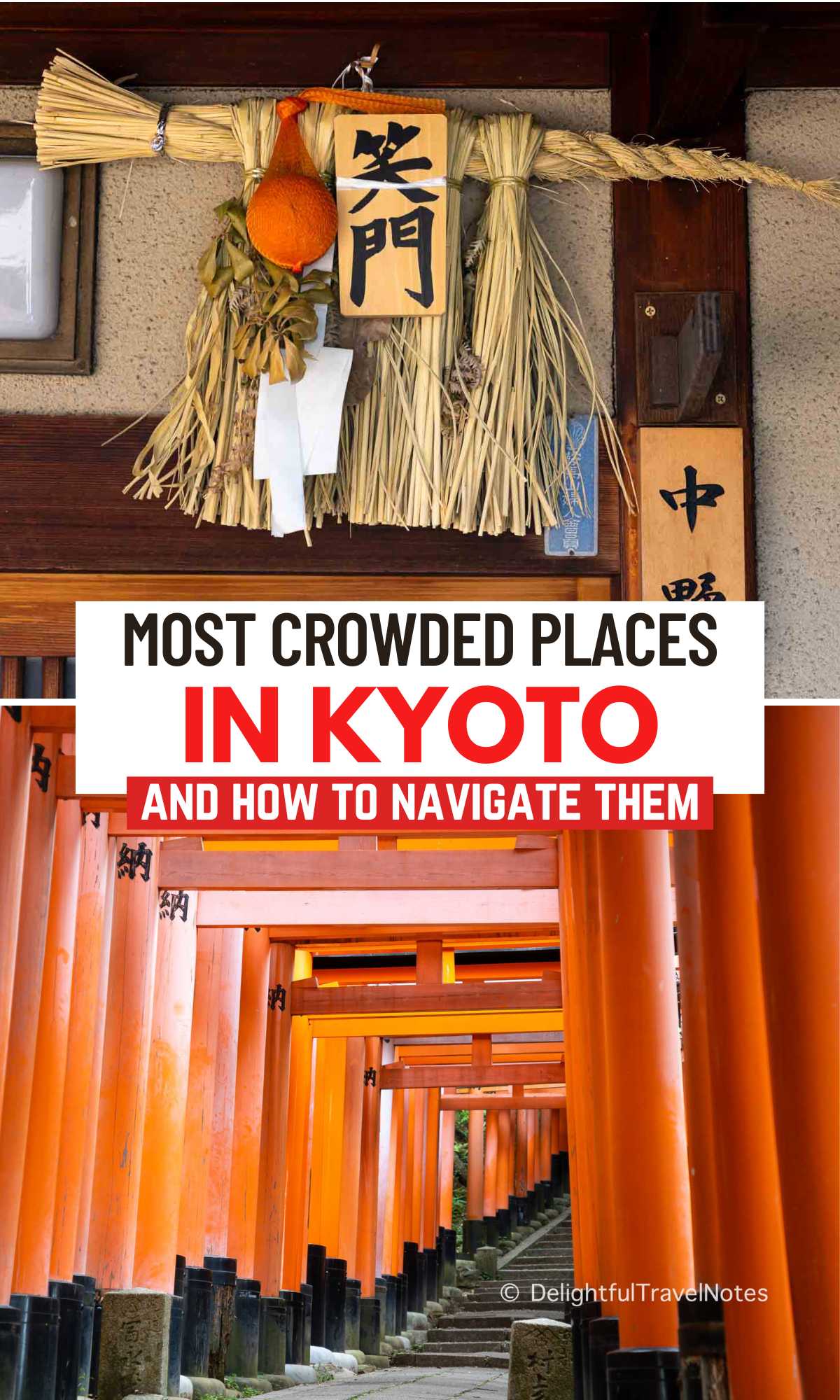

Explore More
The Thousand Kyoto Review: Wonderful Hotel Right Next To Kyoto Station
How To Plan An Amazing Trip to Kyoto (Beyond General Japan Travel Tips)
Nanzen-ji Fall Colors and Walking Route